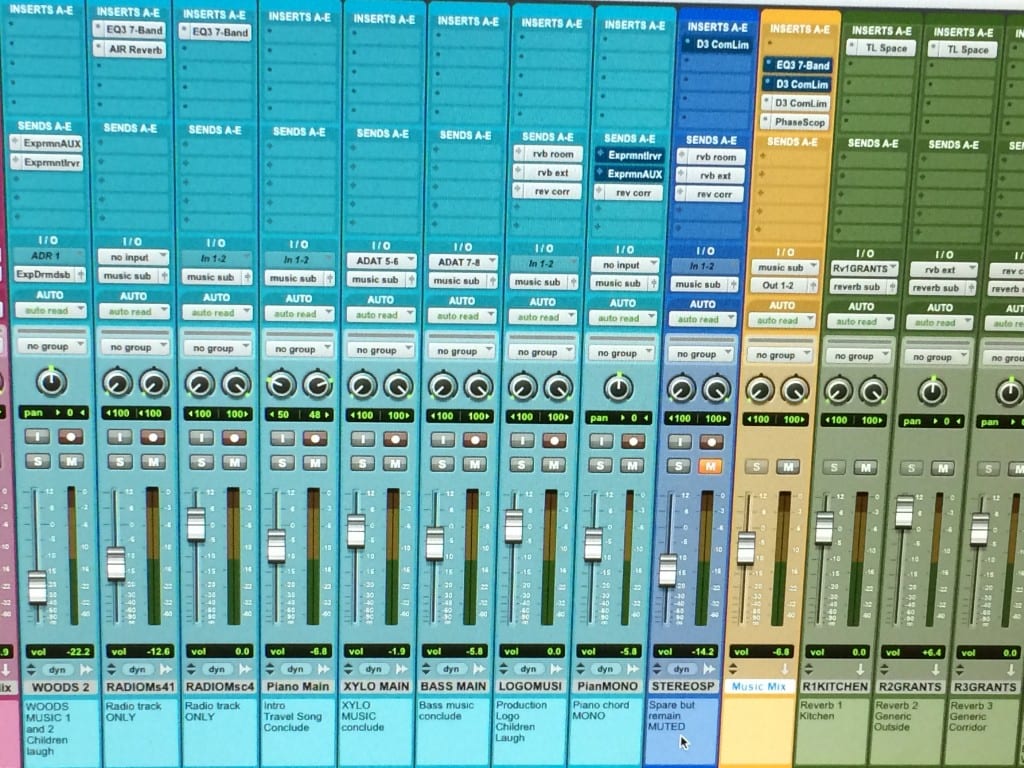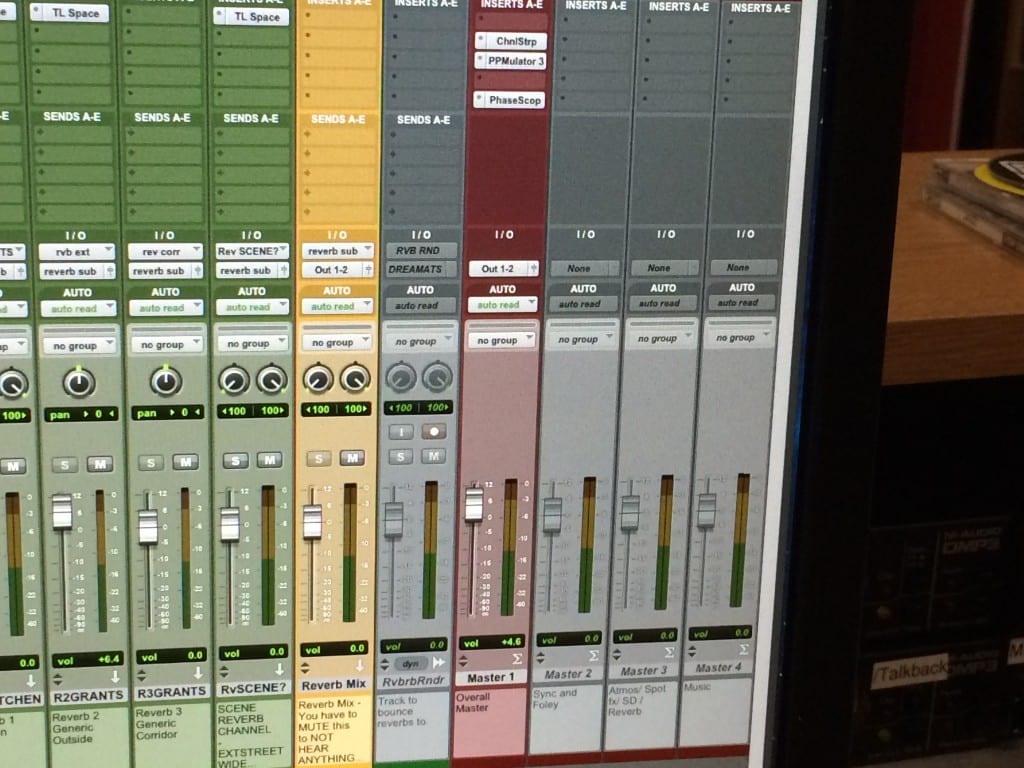“Mix Stems are used to create the final print masters for film and high-end TV productions…If done correctly, mix stems will combine at unity gain without any adjustment.” – (Shepherd, Pro Tools for Video, Film and multimedia)
Our client did not specify any particular requirements for their files or mastering levels, so I suggested we deliver a single stereo mix and component mixes of dialogue, sfx and music tracks, to which they agreed. We also agreed with them to mix these using the BBC technical guidelines for audio which seemed appropriate for a drama of this type. An alternative would be to mix for theatre’s, given the intention to potentially show the piece at film festivals,or to the technical specifications of an average film festival. However, few of the major festivals I researched (including BFI’s and Canne) offer any specific technical guidance on audio mix levels, and it is difficult to mix for a large room without calibrating your mix environment to do so, and I’m unsure of the calibration in the LSM Sound Theatre.
Though my colleagues were still dealing with some of the specifics of the construction of our audio later in the piece, I spent much of our final two days on the project master-mixing each scene up to these standards and finessing the transitions. Again, this is not an ideal situation but we’d set ourselves the personal deadline of end of play on Saturday 23rd January to have completed the construction and mix of our hand-in version of ‘George’.
The BBC guidelines above informed the mix of ‘George’, along with a passing reference to the EBU R128 recommendations, also mentioned above. Each master auxiliary – music / dialogue / sfx / foley – had it’s own set of automated processing, which was generally lightly compressed and / or limited in some cases. This fed another gently compressed master bus compressor. I’ve tried to be careful with the compressors as George’s audio is very dynamic – some scenes have little in the way of loud action, others are much more heavily layered – creating a ‘blocky’ mix visually. I wanted to retain this dynamic artistically, because backed off atmospheres and near-silence helps maintain a sense of stillness in some scenes, but balance this with the technical requirements above, specifically that nothing peaks above 6 PPM, and that the focus points of the mix remain roughly within the levels above.
Here’s a visual representation of the music mix structure in protools, blue tracks are the music components, orange the aux subs, leading to the burgundy master fader –
The final point in this process came after mixdown, with a thorough mono / stereo check of the final stereo wav before the audio was delivered to the director.
– Circa 400 Words
Key Points –
Interaction with the director to discover delivery requirements – Process Management
- To successfully manage the audio team’s interaction with film’s director, editor and producer on a practical and creative level, and ensure the audio team’s work is delivered on time and to a good standard.
Application of skills and conduct in production
Research and application of delivery standards in the mix – Contribution, Research
- Comply with legal and ethical codes of conduct; health & safety regulations.
- Assess the technical requirements of a production to inform the selection of appropriate tools, techniques and processes.
Application of skills and conduct in production
Conducting the mix – Contribution
- To manage the delivery of the soundtrack at various stages of the production along with relevant paperwork, to the director and producer.


